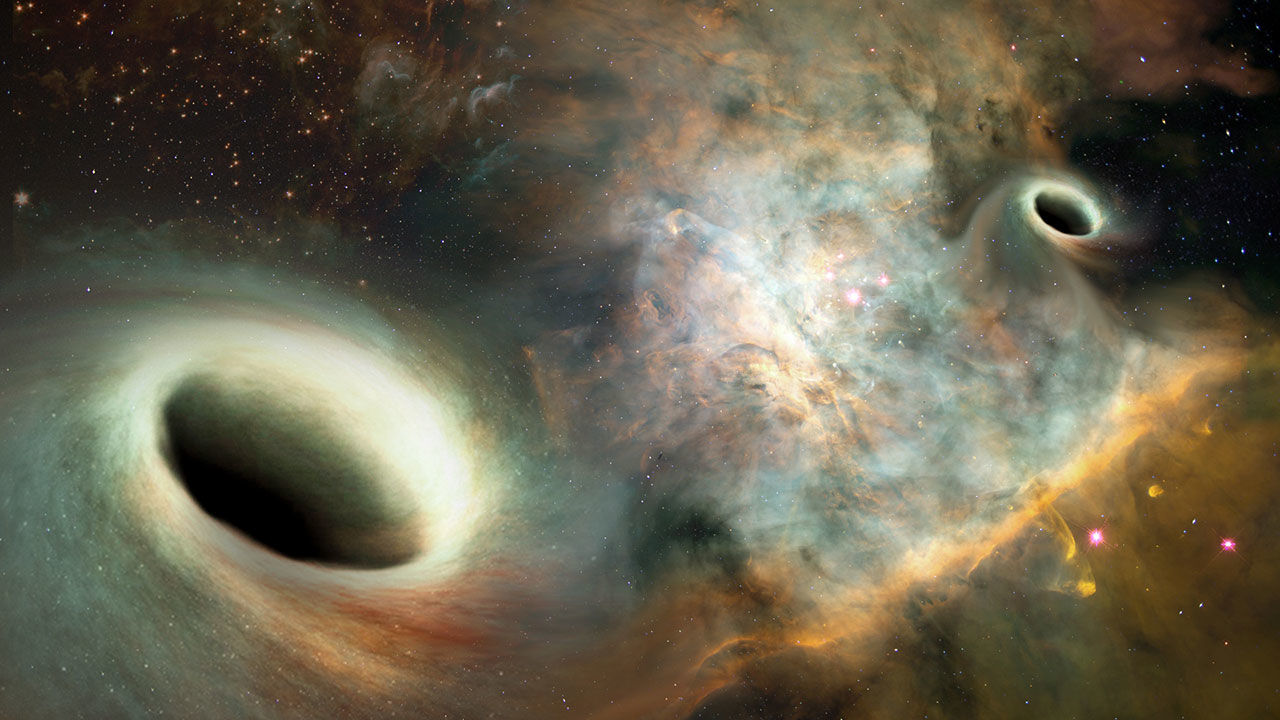|
A team of researchers from the ARC Centre of Excellence for Gravitational Wave discovery (OzGrav) recently published a study revealing something unexpected about black holes: that intermediate-mass black holes with precessing orbits should be easier to detect than standard ones. Black holes are regions of space-time from which nothing can escape, not even light. They are the corpses of dead stars that collapsed under their own weight, after running out of fuel. As archaeology helps us to understand how dinosaurs lived, the study of black holes helps us to understand how stars formed, evolved and died. When two blackholes collide, they release incredible amounts of energy in the form of gravitational-waves (ripples in the fabric of space-time), producing the most powerful space-time storms. By observing these waves, scientists can explore the most fundamental properties of gravity. Black holes can be classified according to their mass—two different kinds have been identified: black holes with a mass several times bigger than the Sun; and supermassive black holes that lie in the centre of most galaxies (the largest type of black hole), containing a mass billions of times the mass of the Sun. Intermediate-mass black holes are the elusive missing link; despite the indirect evidence for their existence, scientists have not yet confirmed a conclusive observation of these black holes. Finding them would help to explain the mystery of how stellar mass black holes can evolve into supermassive ones. The LIGO and Virgo collaboration searched for intermediate-mass black hole collisions during their first and second observing runs, from 2015 to 2018, but were not successful. On the bright side, the lack of a detection allows scientists to confirm how many of these collisions happen in the Universe. To achieve this in the study researchers including OzGrav Alumnus Juan Calderon Bustillo, first determined the observable distance of these collisions using supercomputer simulations. The gravitational-wave signals generated from the collision were recorded and injected into the data to assess their recovery rate in the search algorithms. When doing similar studies, scientists have always assumed that two colliding black holes approach each other with a constant orbital plane, like the orbit of the Earth and the Sun. However, there is another possible situation in which the black holes move up and down, describing what is known as a precessing orbit. The researchers found that this kind of collision can be observed from a further distance, allowing them to better constrain the number of black hole collisions out there. This also means that these black holes may be easier to detect if they follow precessing orbits rather than standard ones, making them better candidates for a first detection of intermediate-mass black holes.
0 Comments
Leave a Reply. |
|
- Home
- About
-
Our People
- Chief Investigators
- Partner Investigators
- Associate Investigators
- Postdocs and Students >
- Professional & Outreach staff
- Governance Advisory Committee
- Scientific Advisory Committee
- Executive Committee
- Equity & Diversity Committee
- Early Career Researcher Committee
- Professional Development Committee
- Research Translation Committee
- OzGrav Alumni
- Research Themes
- Education and Outreach
- Events
- News/Media
- Contact Us
- Home
- About
-
Our People
- Chief Investigators
- Partner Investigators
- Associate Investigators
- Postdocs and Students >
- Professional & Outreach staff
- Governance Advisory Committee
- Scientific Advisory Committee
- Executive Committee
- Equity & Diversity Committee
- Early Career Researcher Committee
- Professional Development Committee
- Research Translation Committee
- OzGrav Alumni
- Research Themes
- Education and Outreach
- Events
- News/Media
- Contact Us


 RSS Feed
RSS Feed








